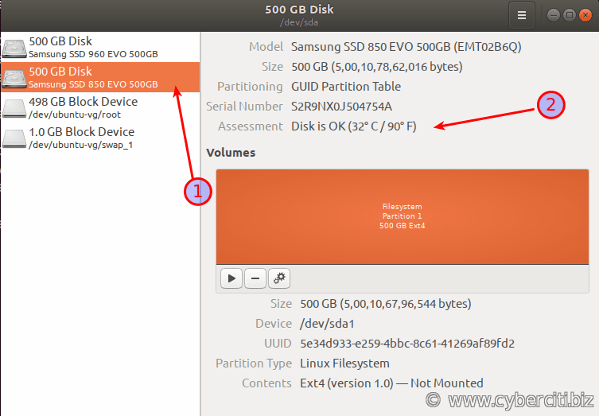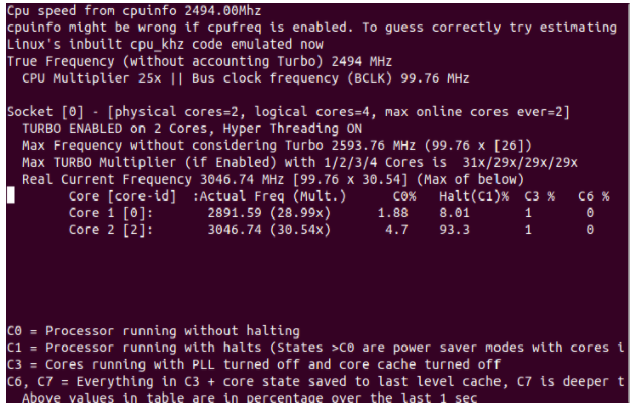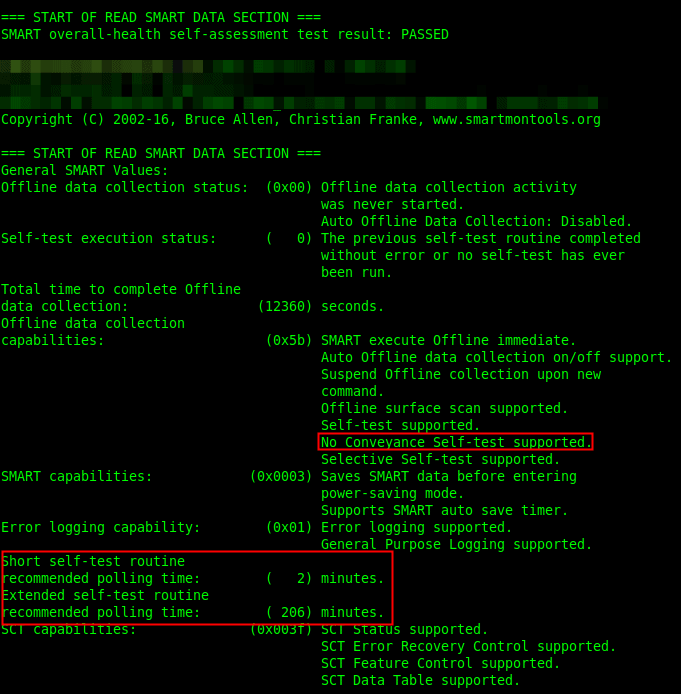
- #Ubuntu disk health check install#
- #Ubuntu disk health check serial#
- #Ubuntu disk health check software#
- #Ubuntu disk health check password#
The second, a Kingston SSD, was installed by me. The first (an Intel SSD) was installed by System76.

For example, I have two different SSDs installed in my System76 Leopard Extreme. Not all manufacturers follow the same standard. One thing you will notice is that each SSD will return different test entries. As the test runs, a progress meter will report the percentage of the test complete (as well as the Start button will change to Stop).Īfter the Self-Test completes, the new results will populate the window. Once authenticated, the testing will begin.
#Ubuntu disk health check password#
You will be required to enter your sudo password to continue on with the test. Short-A collection of test routines that have the highest chance of detecting drive problems.Įxtended-Tests complete disk surface and performs various test routines built into the drive.Ĭonveyance-Identify damage incurred during transporting of drive. When you click the Start Self-test button, a drop-down menu will appear, from which you can choose one of three tests: To run a new test, click the Start Self-test button.įigure 3: The most recent test results for this particular SSD came up OK. If SMART isn’t enabled, click the slider to enable. You should also see that the SMART (Self-Monitoring, Analysis and Reporting Technology) option is enabled (slider in the top right of the window). In the new window, you should see the results of the last test run (Figure 3). Click on the gear icon and then, from the drop-down, select SMART Data & Self-Tests… (Figure 2).
#Ubuntu disk health check serial#
You should automatically see a quick Assessment of the drive (size, partitioning, Serial number, health, and temp). To do so, open up GNOME Disks and select the disk you want to test. Otherwise, it’ll be up to you to know which drives are SSDs and which are Standard.įigure 2: To run a test, select the SMART Data & Self-Tests… option. The SSDs will not be labeled any differently than the standard drives (unless the manufacturer included SSD in the name (as you see with the INTEL 120 GB SSD on my system-labeled SSDSC2BW120A4). The GNOME Disks main window is laid out quite well (Figure 1 above).įrom here you should see all of your attached drives. Go through your desktop menu, locate the app, and click to launch. Type your sudo password and hit the Enter key
#Ubuntu disk health check install#
Issue the command sudo apt-get install gnome-disk-utility The installation of GNOME Disks can be done from a single command. If you’re using a non-Ubuntu-based distribution, the installation can be achieved by swapping out the package manager used on your system (i.e. In fact, I will demonstrate GNOME Disks from my Elementary OS Freya desktop. GNOME Disk is not limited to distributions running GNOME.

Let’s install GNOME Disks and use it to test the health of your installed SSDs. Get a quick glimpse of your drive’s healthĪll from a handy, user-friendly GUI tool. Thanks to a very handy tool called GNOME Disks, you can get a quick glimpse of your drive health and run standard tests on the drive. Does that mean Linux users must remain in the dark as to their drive health? No.

#Ubuntu disk health check software#
However, most of that software is, as you might expect, Windows-only. Many SSDs you purchase are shipped with software that can be used to monitor said health. After all, your data depends on the storing drives being sound and running properly. With no moving parts to wear out, these drives can (effectively) enjoy a longer life than standard platter-based drives.Įven though these drives are not prone to mechanical failure, you will still want to keep tabs on their health. They are faster, and the latest iterations are more reliable than traditional drives. Smartctl version 5.Solid State Drives (SSDs) are slowly becoming the norm, with good reason. The output will look similar to this: ~# smartctl -health /dev/sda Replace /dev/sda with the device name of the harddisk that you want to query. To get a summary of the healt status of the disk, run: smartctl -health /dev/sda the device of partition/dev/sda1 is /dev/sda.

To get the device name, use the partition name without the number, e.g. If you are unsure about the device names of your computer, then you can get them with: fdisk -l For the first SATA disk, this is normally /dev/sda, the second is /dev/sdb etc. Installation apt-get install smartmontools Usageįirst we need to know the internal device name of the harddisks. On Linux, there is a software package called smartmontools that may be used to query the SMART status of the disk to see if it will fail soon. Every current disk includes a built-in monitoring feature known as SMART that keeps track of faults.


 0 kommentar(er)
0 kommentar(er)
